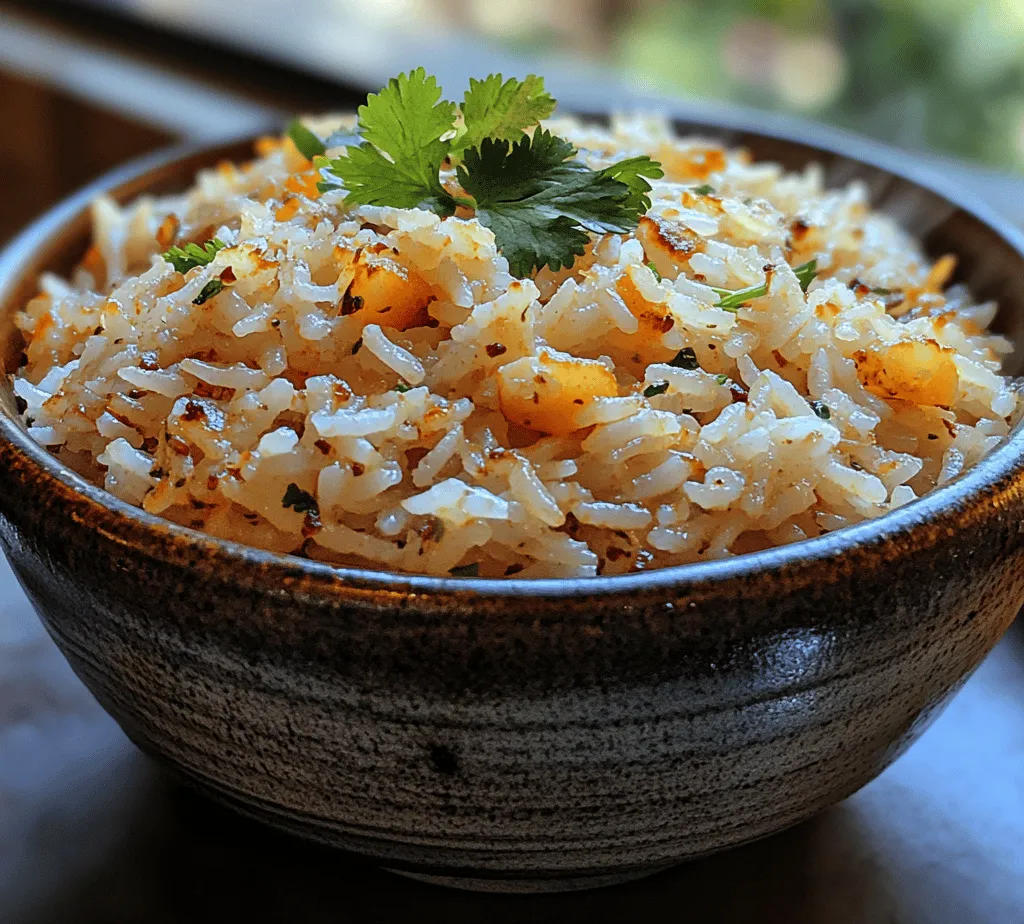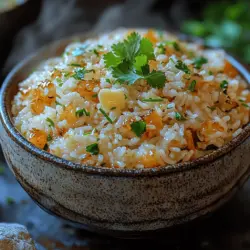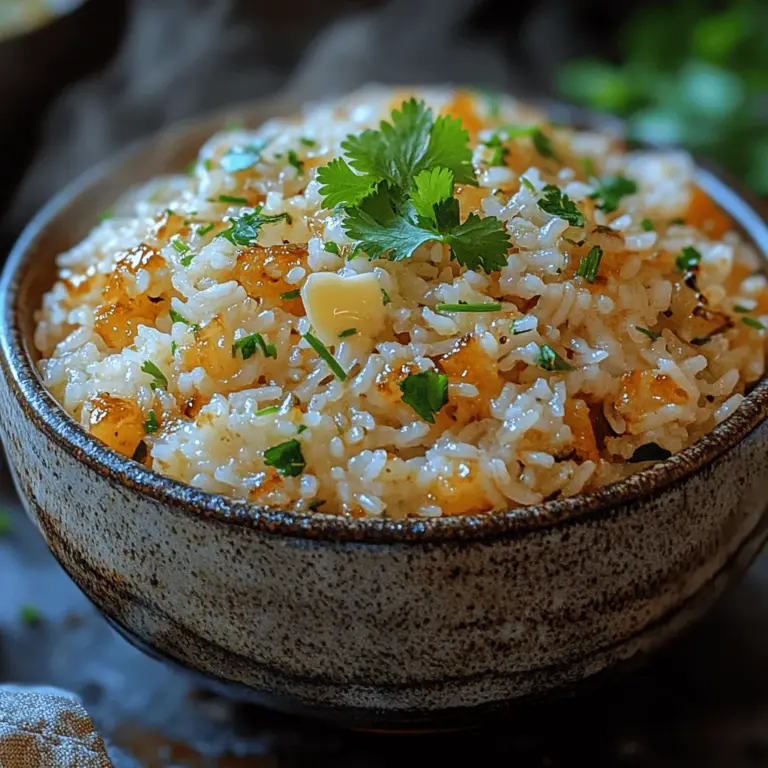Introduction
Perfectly cooked rice is a cornerstone of many cuisines around the globe, serving as a versatile base for countless dishes. Whether you’re enjoying a fragrant bowl of Basmati with your curry, savoring sticky Jasmine rice with your stir-fry, or indulging in a comforting risotto, the texture and flavor of rice can significantly elevate your meal. However, cooking rice to fluffy perfection can often be a challenge for home cooks. Too often, we end up with clumpy, sticky, or undercooked rice, which can impact the overall success of our dishes.
In this article, we aim to demystify the process of cooking rice, providing you with a foolproof method to achieve fluffy rice every time. We will explore various rice types, delve into the science behind achieving the perfect texture, and guide you through detailed, step-by-step instructions that ensure your rice turns out light and fluffy.
Understanding Rice Varieties
When it comes to rice, not all varieties are created equal. Each type of rice has its unique characteristics, making it suitable for different culinary applications. Understanding these differences is essential for selecting the right rice for your meal.
Long-Grain Rice Types
Long-grain rice is characterized by its slender shape and fluffy texture when cooked. The most popular varieties include Basmati and Jasmine rice, both of which are staples in many kitchens.
– Basmati Rice: Hailing from the Indian subcontinent, Basmati rice is known for its aromatic fragrance and nutty flavor. This rice variety is ideal for dishes such as biryani, pilaf, and as a side for curries. Its dry and fluffy texture makes it perfect for absorbing sauces without becoming mushy.
– Jasmine Rice: Originating from Thailand, Jasmine rice is slightly shorter and has a delicate, floral aroma. It is often used in Southeast Asian cuisines, complementing dishes such as stir-fries, curries, and grilled meats. Jasmine rice tends to be slightly stickier than Basmati, making it a great choice for dishes where a bit of clumpiness is desired.
Nutritional Benefits of Using Different Rice Varieties
Beyond their culinary applications, different rice varieties also offer various nutritional benefits. For example, Basmati rice is often considered a healthier option due to its lower glycemic index compared to other rice types, making it a suitable choice for individuals monitoring blood sugar levels. Jasmine rice, while slightly higher in calories, is rich in essential carbohydrates and can provide a quick energy boost.
Incorporating a variety of rice types into your diet can ensure you reap the nutritional benefits while indulging in diverse flavors and textures.
The Science Behind Fluffy Rice
To achieve perfectly fluffy rice, it’s essential to understand the science that underpins rice cooking. The key factor in determining the texture of your rice lies in the starch composition.
Rice grains are composed mainly of two types of starch: amylose and amylopectin. Long-grain rice varieties like Basmati typically have a higher amylose content, which contributes to their fluffy texture. In contrast, short-grain rice varieties contain more amylopectin, resulting in a stickier, creamier consistency.
Importance of Rinsing Rice
One crucial step in preparing rice is rinsing it before cooking. Rinsing rice serves to remove excess surface starch, which can lead to clumping and a gummy texture when cooked. By rinsing the rice thoroughly, you can achieve a cleaner, fluffier result.
To rinse rice properly, place it in a fine-mesh strainer or bowl and run cold water over it. Gently swish the rice with your hands, allowing the water to turn cloudy. Continue rinsing until the water runs clear, indicating that most of the excess starch has been removed.
Cooking Time and Water Ratios
The cooking time and water-to-rice ratio are also critical in determining the final texture of your rice. Each rice variety may require a different amount of water and cooking duration. For example, Basmati rice typically uses a 1:1.5 ratio of rice to water and takes about 15-20 minutes to cook, while Jasmine rice may require a 1:1.25 ratio and takes around 12-15 minutes.
Experimenting with these ratios and times will help you find the perfect balance for your preferred rice variety, ensuring a consistently fluffy result.
Ingredients for Perfect Fluffy Rice
To embark on your journey to cooking the perfect fluffy rice, you’ll need a few essential ingredients. Here’s a detailed breakdown of what you’ll need:
– Long-Grain Rice: Choose high-quality long-grain rice such as Basmati or Jasmine for the best results. These varieties are known for their fluffiness and distinctive flavors.
– Water or Broth: While water is the standard cooking liquid, using broth can add an extra layer of flavor to your rice. Vegetable or chicken broth can enhance the overall taste, making the rice an integral part of your dish rather than just a side.
– Butter or Olive Oil: Adding a small amount of fat, such as butter or olive oil, can help improve the richness of your rice and prevent it from sticking together. This step is optional but can elevate the flavor.
– Salt: Seasoning your rice is essential for bringing out its flavor. A pinch of salt goes a long way in enhancing the taste of your cooked rice.
– Optional Ingredients: For added aroma and complexity, consider incorporating a bay leaf or fresh herbs, such as thyme or parsley, into the cooking liquid. These ingredients can infuse your rice with delightful flavors, making it even more delicious.
Step-by-Step Instructions for Cooking Perfect Fluffy Rice
Now that we have a solid understanding of rice varieties, their nutritional benefits, and the science behind cooking fluffy rice, let’s dive into the step-by-step process.
Rinsing the Rice
Rinsing is the first and most crucial step in preparing rice. Here’s how to do it properly:
1. Measure Your Rice: Start by measuring the desired amount of long-grain rice you want to cook. A standard serving size is approximately 1 cup of uncooked rice, which typically yields about 3 cups of cooked rice.
2. Place in a Rinse Container: Transfer the measured rice to a fine-mesh strainer or a bowl. If using a bowl, make sure it is large enough to accommodate the rice and water.
3. Rinse Under Cold Water: If using a strainer, run cold water over the rice, allowing it to flow through the mesh. If using a bowl, fill it with cold water, swish the rice with your hands, and then carefully pour off the cloudy water. Repeat this process multiple times until the water runs clear.
4. Visual Cues for Rinsing: As you rinse, observe the water color. When it appears clear, you’ve successfully removed the excess starch. This step is vital for ensuring a fluffy texture.
Draining and Soaking
After rinsing, draining and soaking your rice can further enhance its texture. Here’s how to proceed:
1. Drain the Rice: Allow the rinsed rice to sit in the strainer until most of the water has drained. This step helps remove any residual moisture that could affect the cooking process.
2. Soak for Enhanced Texture: Soaking the rice for about 30 minutes before cooking allows the grains to absorb some water, which can lead to a more even cooking texture. This step is particularly beneficial for Basmati rice, as it helps the grains elongate and achieve that signature fluffiness.
By following these initial steps, you’ll set the foundation for cooking perfect fluffy rice. Stay tuned for the next part of this article, where we will explore the actual cooking process and additional tips for achieving rice perfection.

Recommended Soaking Time for Optimal Fluffiness
To achieve the ultimate fluffiness in your rice, soaking is a crucial step. Soaking not only helps to hydrate the grains, but it also allows for even cooking. For most types of rice, a soaking time of 30 minutes to 2 hours is ideal. Short-grain rice varieties, such as sushi rice, benefit from a shorter soak of about 30 minutes, while long-grain varieties like basmati or jasmine can soak for up to 2 hours. This soaking process helps to remove excess starch, which can make rice sticky, and encourages the grains to expand properly during cooking.
Boiling Water or Broth
Once your rice has soaked, the next step is preparing the boiling liquid. You can use water, but for an added depth of flavor, consider using broth—chicken, vegetable, or beef broth can elevate your dish significantly. For every cup of rice, you will need approximately 1.5 to 2 cups of liquid, depending on the type of rice and desired texture.
To achieve the right boiling point, bring your liquid to a vigorous boil before adding the rice. This ensures that the rice starts cooking at the right temperature, which is crucial for achieving that fluffy texture. Maintain a rolling boil for about 2-3 minutes before proceeding to the next step.
Enhancing Flavor with Butter/Oil and Optional Ingredients
For those looking to enhance the flavor of their rice, adding a tablespoon of butter or oil to the boiling liquid can make a significant difference. This not only adds richness but also helps to further prevent the grains from sticking together. If you want to infuse more flavor, consider adding aromatics such as garlic, onions, or herbs to the boiling liquid. A bay leaf or a few sprigs of fresh thyme can add a subtle yet delightful taste to your rice.
Adding Rice to the Boiling Liquid
Now, it’s time to add your soaked rice to the boiling liquid. Pour the rice in slowly and evenly to avoid clumping. This step is crucial; if you dump the rice in all at once, it can create a sticky mess. Immediately after adding the rice, give it a gentle stir with a wooden spoon. This initial stirring is important to separate the grains and prevent them from sticking together while the rice begins to absorb the liquid.
Simmering and Steaming
After adding the rice, cover the pot with a tight-fitting lid and reduce the heat to low. It’s essential to maintain a steady simmer; too high a temperature can cause the water to evaporate too quickly, leaving the rice undercooked. The tight-fitting lid traps steam inside, which is vital for cooking the rice evenly. If you notice steam escaping, check to ensure that the lid is properly sealed.
Cooking Time
Cooking time varies based on the type of rice you are using. For example:
– Long-grain white rice (like basmati or jasmine) typically cooks in about 15-20 minutes.
– Medium-grain white rice takes around 18-22 minutes.
– Short-grain rice usually requires 20-25 minutes.
– Brown rice, on the other hand, can take anywhere from 40-50 minutes.
To determine if your rice is done, look for the following indicators: the grains should be tender and all the liquid should be absorbed. If the rice is still hard, add a few tablespoons of water and cook for an additional few minutes until the desired texture is reached.
Resting the Rice
After cooking, it’s crucial to let your rice sit for about 5-10 minutes with the lid on. This resting period allows the moisture to redistribute throughout the grains, which is key to achieving that perfectly fluffy rice. If you skip this step, you may end up with unevenly cooked rice, where some grains are mushy while others are still hard.
Fluffing the Rice
Once the resting period is over, it’s time to fluff the rice. Use a fork to gently separate the grains, being careful not to mash them. The goal is to aerate the rice without breaking the grains, which helps maintain that fluffy texture. Look for visual cues: the rice should appear light and airy, with each grain distinct from the others.
Serving Suggestions
Fluffy rice is incredibly versatile and can be paired with a wide variety of proteins and vegetables. Here are some serving suggestions to inspire your next meal:
– Proteins: Serve fluffy rice alongside grilled chicken, beef stir-fry, or pan-seared fish. The lightness of the rice complements rich proteins perfectly.
– Vegetables: Pair with sautéed vegetables like bell peppers, broccoli, or snap peas for a colorful, nutritious meal. You can also try mixing in cooked vegetables directly into the rice after fluffing for added flavor and texture.
– Creative Incorporations: Use fluffy rice as the base for rice bowls topped with your favorite ingredients, such as shredded beef, avocado, or a fried egg. You can also turn it into fried rice by adding soy sauce, green onions, and your choice of protein for a delicious twist.
Conclusion
Achieving perfect fluffy rice is a skill that can elevate your home-cooked meals to new heights. By following the recommended soaking times, carefully controlling the boiling and simmering processes, and allowing the rice to rest, you can create a delightful side dish or base for countless meals.
Do not hesitate to experiment with various rice varieties and flavors—each type brings its unique texture and taste to the table. The joy of serving beautifully cooked rice as part of a meal is unparalleled; it can be the star of the show or a supporting actor that enhances the overall dining experience. So gather your ingredients, follow these steps, and enjoy the satisfaction of perfect fluffy rice!


